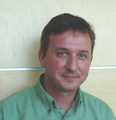YOUTUBE VIDEO: “What we believed to be ‘unachievable’ in 1998 may in fact now be within our grasp,” stated Kim Stephens when he provided a UDI Victoria audience with the provincial context for developing the online Water Balance Model as an extension of British Columbia’s Stormwater Guidebook (Flashback to March 2008)

“A decade ago, we thought that the best we could do would be to Hold the Line for 20 years; and if we could do that for 20 years, we believed that we might be able to improve conditions over a 50-year period,” stated Kim Stephens. “We went back to the basics to gain an understanding of how we could protect or restore the natural water balance by changing the way land is developed. A decade ago, the breakthrough in thinking came when we developed the concept of a Rainfall Spectrum to categorize the rainfall-days that occur each year.”


 “We are using the slogan The New Business As Usual to convey the message that, for change to really occur, practices that until now have been viewed as the exception must become the norm moving forward. We have to build regulatory models and develop models of practice and expertise,” stated Dale Wall, Deputy Minister.
“We are using the slogan The New Business As Usual to convey the message that, for change to really occur, practices that until now have been viewed as the exception must become the norm moving forward. We have to build regulatory models and develop models of practice and expertise,” stated Dale Wall, Deputy Minister.






